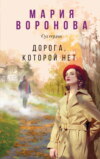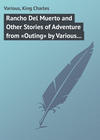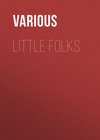Читать книгу: «Birds, Illustrated by Color Photography, Vol. 1, No. 3», страница 2
THE BROWN THRUSH
“However the world goes ill,
The Thrushes still sing in it.”
THE Mocking-bird of the North, as the Brown Thrush has been called, arrives in the Eastern and Middle States about the 10th of May, at which season he may be seen, perched on the highest twig of a hedge, or on the topmost branch of a tree, singing his loud and welcome song, that may be heard a distance of half a mile. The favorite haunt of the Brown Thrush, however, is amongst the bright and glossy foliage of the evergreens. “There they delight to hide, although not so shy and retiring as the Blackbird; there they build their nests in greatest numbers, amongst the perennial foliage, and there they draw at nightfall to repose in warmth and safety.” The Brown Thrasher sings chiefly just after sunrise and before sunset, but may be heard singing at intervals during the day. His food consists of wild fruits, such as blackberries and raspberries, snails, worms, slugs and grubs. He also obtains much of his food amongst the withered leaves and marshy places of the woods and shrubberies which he frequents. Few birds possess a more varied melody. His notes are almost endless in variety, each note seemingly uttered at the caprice of the bird, without any perceptible approach to order.
The site of the Thrush’s nest is a varied one, in the hedgerows, under a fallen tree or fence-rail; far up in the branches of stately trees, or amongst the ivy growing up their trunks. The nest is composed of the small dead twigs of trees, lined with the fine fibers of roots. From three to five eggs are deposited, and are hatched in about twelve days. They have a greenish background, thickly spotted with light brown, giving the whole egg a brownish appearance.
The Brown Thrush leaves the Eastern and Middle States, on his migration South, late in September, remaining until the following May.
THE THRUSH’S NEST
“Within a thick and spreading hawthorn bush
That overhung a molehill, large and round,
I heard from morn to morn a merry thrush
Sing hymns of rapture while I drank the sound
With joy – and oft an unintruding guest,
I watched her secret toils from day to day;
How true she warped the moss to form her nest,
And modeled it within with wood and clay.
And by and by, with heath-bells gilt with dew,
There lay her shining eggs as bright as flowers,
Ink-spotted over, shells of green and blue:
And there I witnessed, in the summer hours,
A brood of nature’s minstrels chirp and fly,
Glad as the sunshine and the laughing sky.”
THE BROWN THRUSH
Dear Readers:
My cousin Robin Redbreast told me that he wrote you a letter last month and sent it with his picture. How did you like it? He is a pretty bird – Cousin Robin – and everybody likes him. But I must tell you something of myself.
Folks call me by different names – some of them nicknames, too.
The cutest one of all is Brown Thrasher. I wonder if you know why they call me Thrasher. If you don’t, ask some one. It is really funny.
Some people think Cousin Robin is the sweetest singer of our family, but a great many like my song just as well.
Early in the morning I sing among the bushes, but later in the day you will always find me in the very top of a tree and it is then I sing my best.
Do you know what I say in my song? Well, if I am near a farmer while he is planting, I say: “Drop it, drop it – cover it up, cover it up – pull it up, pull it up, pull it up.”
One thing I very seldom do and that is, sing when near my nest. Maybe you can tell why. I’m not very far from my nest now. I just came down to the stream to get a drink and am watching that boy on the other side of the stream. Do you see him?
One dear lady who loves birds has said some very nice things about me in a book called “Bird Ways.” Another lady has written a beautiful poem about my singing. Ask your mamma or teacher the names of these ladies. Here is the poem:
There’s a merry brown thrush sitting up in a tree.
He is singing to me! He is singing to me!
And what does he say – little girl, little boy?
“Oh, the world’s running over with joy!
Hush! Look! In my tree,
I am as happy as happy can be.”
And the brown thrush keeps singing, “A nest, do you see,
And five eggs, hid by me in the big cherry tree?
Don’t meddle, don’t touch – little girl, little boy —
Or the world will lose some of its joy!
Now I am glad! now I am free!
And I always shall be,
If you never bring sorrow to me.”
So the merry brown thrush sings away in the tree
To you and to me – to you and to me;
And he sings all the day – little girl, little boy —
“Oh, the world’s running over with joy!
But long it won’t be,
Don’t you know? don’t you see?
Unless we’re good as good can be.”
THE JAPAN PHEASANT
ORIGINALLY the Pheasant was an inhabitant of Asia Minor but has been by degrees introduced into many countries, where its beauty of form, plumage, and the delicacy of its flesh made it a welcome visitor. The Japan Pheasant is a very beautiful species, about which little is known in its wild state, but in captivity it is pugnacious. It requires much shelter and plenty of food, and the breed is to some degree artificially kept up by the hatching of eggs under domestic hens and feeding them in the coop like ordinary chickens, until they are old and strong enough to get their own living.
The food of this bird is extremely varied. When young it is generally fed on ants’ eggs, maggots, grits, and similar food, but when it is full grown it is possessed of an accommodating appetite and will eat many kinds of seeds, roots, and leaves. It will also eat beans, peas, acorns, berries, and has even been known to eat the ivy leaf, as well as the berry.
This Pheasant loves the ground, runs with great speed, and always prefers to trust to its legs rather than to its wings. It is crafty, and when alarmed it slips quickly out of sight behind a bush or through a hedge, and then runs away with astonishing rapidity, always remaining under cover until it reaches some spot where it deems itself safe. The male is not domestic, passing an independent life during a part of the year and associating with others of its own sex during the rest of the season.
The nest is very rude, being merely a heap of leaves and grass on the ground, with a very slight depression. The eggs are numerous, about eleven or twelve, and olive brown in color. In total length, though they vary considerably, the full grown male is about three feet. The female is smaller in size than her mate, and her length a foot less.
The Japan Pheasant is not a particularly interesting bird aside from his beauty, which is indeed brilliant, there being few of the species more attractive.





















